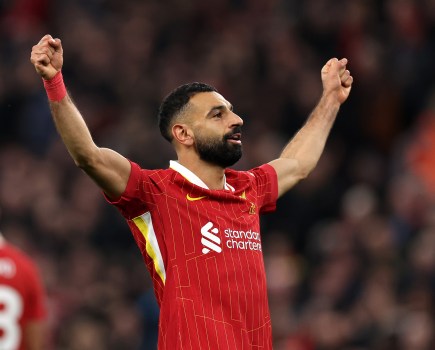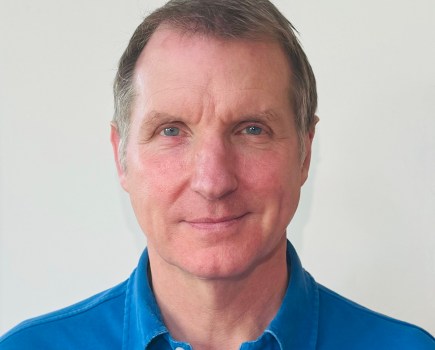In December 20 last year, almost 37,000 fans turned out in Mumbai – a neutral venue – to watch Atletico de Kolkata beat Kerala Blasters 1-0 in the Final of the inaugural Indian Super League (ISL). In the last minute of stoppage time, Mohammed Rafique headed home a corner past the despairing dive of David James in the most dramatic of endings.
With an average attendance of almost 24,000 and an ability to make headlines in the local media that the regular league, the I-League, simply can’t compete with, the first ISL – backed by Indian conglomerate Reliance and the Indian FA’s commercial partners IMG – was generally seen as a success.
Even the selling of the eight franchises was big news with famous investors from diverse worlds such as cricket, Bollywood, business and European football (Atletico Madrid, Fiorentina and Feyenoord) all getting involved. These owners then brought in famous –
if seriously aging – overseas stars such as Robert Pires, Alessandro Del Piero, David Trezeguet, Freddie Ljungberg and Nicolas Anelka, and they were coached by international tacticians such as Zico, Peter Reid and Marco Materazzi.
All in all, this showed that, given the right conditions, Indians will turn out in significant numbers to watch football.
And the question of whether they will keep doing so once the novelty and a little of the glitz has worn off will be answered soon.
Ahead of the 2015 edition, which kicked off on October 3, several of the previous season’s star names had returned, but there did seem to be fewer big names this time around. Anelka is still with Mumbai City, another Chelsea old boy, Adrian Mutu, has signed for Pune City, while John Arne Riise and Florent Malouda have joined Delhi Dynamoes. On the coaching side of things, David Platt is in charge of Pune, Peter Taylor has succeeded David James at Kerala, Anelka is now player-coach after taking over from Peter Reid in Mumbai, and Roberto Carlos is a player-coach in Delhi.
The bulk of the competition’s players, however, come from the currently out-of-season I-League, and this is generally seen as a good thing as it increases the players’ earnings and their exposure to well-known foreign coaches and opponents.
The bread-and-butter competition that started in 2007 lacks the glamour of the new arrival and has an average attendance of less than 5,000. It has 11 teams and is based mostly in the relative football-loving hotspots of Kolkata, Goa and the north-east of the country, as well as Mumbai and Pune.
Whether the Super League helps or harms the I-League is a matter for debate. The ISL has many advantages – not least money, exposure and better facilities – and some believe that the new tournament takes money and attention away from where it is needed most. But others argue that this is entirely new money and attention, and the longer it continues the more it will help to create a solid infrastructure in the country from which all will benefit.
On the negative side, there are rumours that I-League clubs Pune FC and Bharat may not participate when the new season kicks off at the end of the ISL campaign. And such worries have added impetus to a new and major development: the discussion over increasingly when, and not if, the two competitions will be merged.
“We will have only one league in the next two to three years, but how to merge these two together is being planned out,” said All India Football Federation general secretary Kushal Das in August. “It has been a long time that there’s been no change in football here, it needs a shake up. We have a roadmap and even all stakeholders have the same view of having just one league.”
Supporters of the merger hope that combining the glitz, glamour and money of the ISL with the more solid football foundation that the I-League provides is the way forward for Indian football. But not all agree. The country’s best-ever player, Bhaichung Bhutia, believes that the I-league must improve on the pitch and upgrade the facilities off it before there can be any merger.
Talk of patience may fall on deaf ears especially if the next I-League season is a tough one.
There are plenty of issues to discuss – especially if, as many believe, the ISL with its bigger brand power basically absorbs its older and bigger brother. What will be done about promotion and relegation, which takes place in the I-League but not the ISL? And will there be a place for historic Indian club sides such as Mohun Bagan, who recently celebrated their 125th birthday, and Kolkata rivals East Bengal.
For most, the pressing issue for organisers of the ISL is how to ensure an avoidance of the second-season syndrome. What comes after remains to be seen.
Atletico de Kolkata
Salt Lake Stadium (68,000)
Coach: Antonio Lopez
Squad includes: Josemi, Helder Postiga.
Chennaiyin
Jawaharlal Nehru Stadium (40,000)
Coach: Marco Materazzi
Squad includes: Elano, Bernard Mendy.
Delhi Dynamos
Jawaharlal Nehru Stadium (60,000)
Player-coach: Roberto Carlos,
Squad includes: John Arne Riise, Florent Malouda.
Goa
Fatorda Stadium (19,800)
Coach: Zico
Squad includes: Lucio, Leo Moura.
Kerala Blasters
Jawaharlal Nehru Stadium (60,000)
Coach: Peter Taylor
Squad includes: Carlos Marchena, Peter Ramage.
Mumbai City
DY Patil Stadium (55,000)
Player-coach: Nicolas Anelka
Squad includes: Darren O’Dea.
NorthEast United
Indira Gandhi Athletic Stadium (35,000)
Coach: Cesar Farias
Squad includes: Simao Sabrosa, Boubacar Sanogo.
Pune City
Balewadi Sports Complex (18,000)
Coach: David Platt
Squad includes: Adrian Mutu, Didier Zokora, Tuncay Sanli, Kalu Uche.
Key dates:
Regular season started October 3, 2015
Regular season ends December 6, 2015
Final December 20, 2015
By John Duerden







